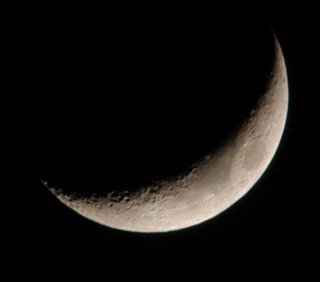Moon Musings

Imagine the world's knowledge stored for safekeeping on the moon! That's been put forth in a recent white paper on commercial uses of the moon by NASA astrobiologist David McKay. He sees long cave-like lava tubes under the moon's surface as perfect sites for giant digital libraries that would be able to talk back and forth to earth by satellite. I looked for the paper on NASA's website and couldn't find it but you can can read a little more about it in the Short Sharp Science blog.
[Photo by Kyle Cassidy.]
On another moon front, it was only a matter of time until someone looked into lunar effects on media use. While lunar effects research on psychological and biological functions is nothing new, it's relatively untrod ground in Communications literature. Until now. Moon and Media: Lunar Cycles and Television Viewing by Heidi Vanebosch (Universityy of Antwerp), Keith Roe and Jan Van den Bulck (Katholieke Universiteit Leuven) appears in the latest issue of Media Psychology (Volume 8, Number 3), available electronically from Penn Libraries webpage.
A review of the literature reveals that the possibility of lunar influence on various aspects of human health and behavior has long been taken seriously in established scientific journals. The purpose of this article is to extend this perspective to media research by focusing on the relation between lunar cycles and television viewing behavior. In preliminary analyses performed on a data set containing daily television viewing figures and moon and weather information for Flanders in 1993 (over a 12-month period), a weak but significant positive relation between "the amount of television viewing" and "the percentage of the moon illuminated" was found. However, subsequent analyses of a data set containing daily television viewing figures and moon information for Flanders, Denmark, Norway, and The Netherlands in 2002 (over a 12-month period), revealed a weak positive correlation between "television viewing time" and "percentage of the moon surface illuminated" only in Denmark. Given these inconsistent results, it is concluded that further investigation is needed. Future studies should investigate data over a longer period of time, include additional moon variables (i.e., amount of moonlight), explicitly test the moon-sleep deprivation-television viewing hypothesis, control for other environmental factors (e.g., weather conditions), and search for alternative explanations for a possible relation between amount of television viewing and the moon cycle.


<< Home